DAVE BRUMSTEAD with a regular look at the scale scene
.jpg)
Welcome to this months Focus on Scale. This month we are covering our visit to the Weymouth International Maritime Modelling Festival, enjoying an Open Day at the Scale Lake of Brentwood MY&PBC and revisiting the kit review of the Model Slipway Al Khubar tug.
Enjoy more Model Boats Magazine reading in the monthly magazine.
Click here to subscribe & save.
Weymouth International Maritime Modelling Festival
Early July saw us making our way to Weymouth for this event. We had registered earlier in the year and had received the necessary paperwork to allow us to camp on the Lodmoor site. Once there, we were issued with our car park pass, programme of events, information sheet and tickets for the Saturday evening show at the Pavilion. With the event now in its fourteenth year, the organisation by Weymouth and Portland Borough Council and the South West Association of Model Boat Clubs was faultless. We paid our first visit to the show on the Friday which is the setting up day and the exhibition is open to the public Saturday and Sunday and this gave us an opportunity to take photographs of the exhibits and to chat to old friends. On the Saturday the Festival was officially opened by the Mayor, Councillor Tim Munro, accompanied by his wife and Barrie Stevens from SWAMBC, Photo 1.
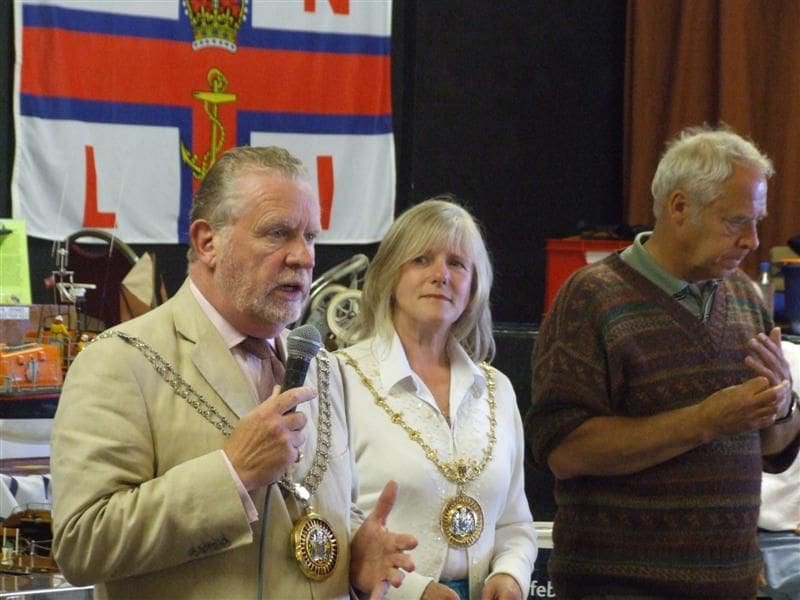
The model in Photo 2 by Allan Crofton caused a bit of head scratching with its name Artee Veesspee until Allan explained that the model is based on a Rotor Tug by Kooren Shipbuilding (KST) mixed with details from the Sanmar Eskort series of tugs by Sanmar (http://www.sanmar.com.tr/eskort.html). The Rotor Tugs (RT) use Schottle drives which Allan has replaced with Voith Schneider Propulsion (VSP) units, hence RTVSP or Artee Veesspee. The tops of the three VSP units can just be made out in Photo 3.
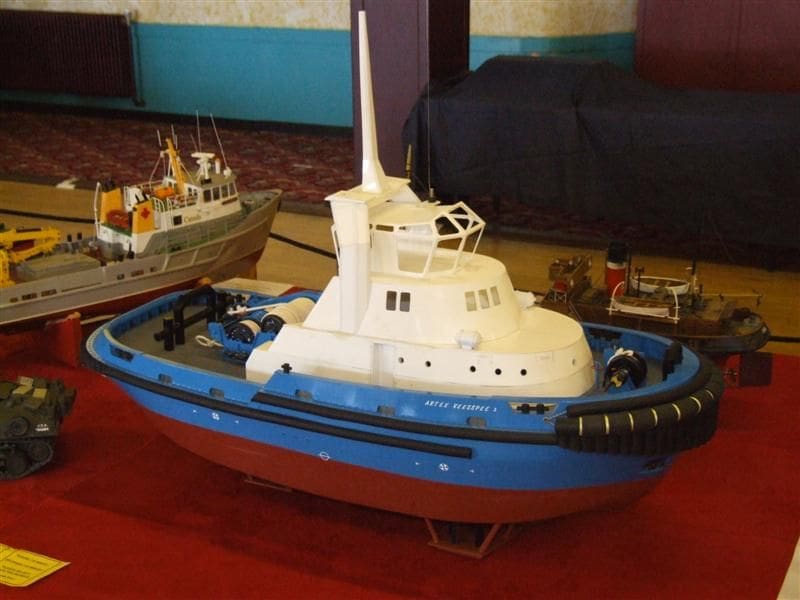
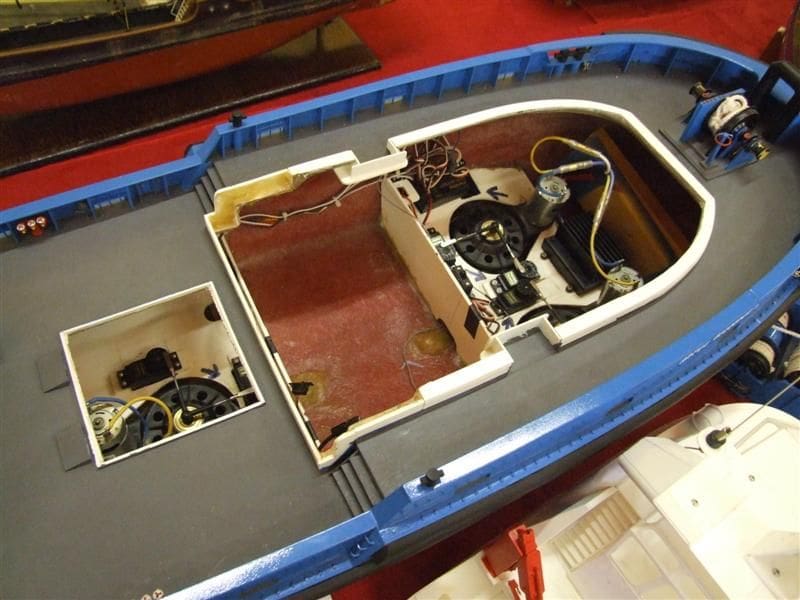
These very neat models were on the Ribble Model Boat Club display, Photo 4. Based on Deans Marine kits, both models were built by David Hicks. Both are equipped with smoke generators, steam whistle and steam engine sound as well as working internal and navigation lights.
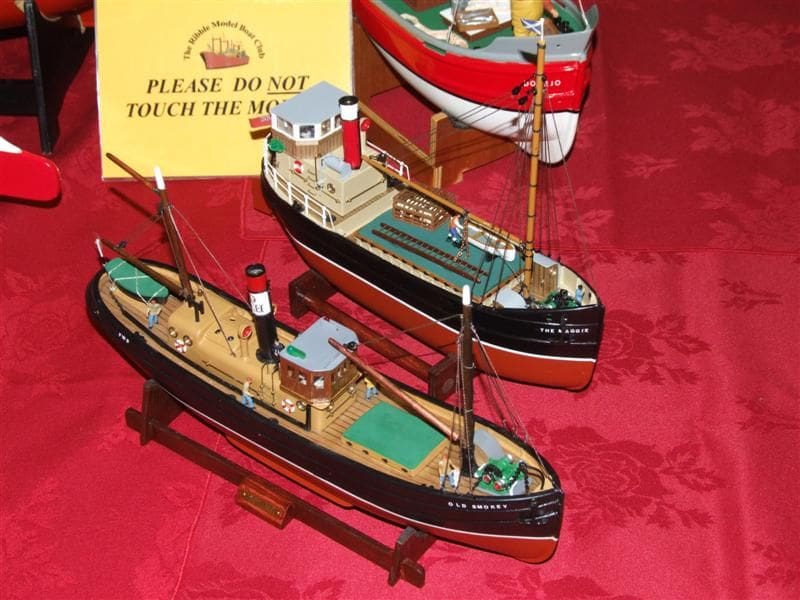
Ray Smiles was exhibiting this nostalgic model of a Watson Motor Sailor Lifeboat, Photo 5. Built as the Penlee Station first motor lifeboat, it served there from 1922 to 1929 before transferring to Falmouth as a reserve boat. The full size vessel was 45 feet in length with a beam of 12 feet and was built with double diagonal planking. On the Clevedon and District Model Boat Club stand was this model of a 10 metre Shelter Deck trawler, Photo 6. Built by Mike Mayhew of Waverley Models, the model is based on drawings from Jim Pottinger and it tows a real working trawl.
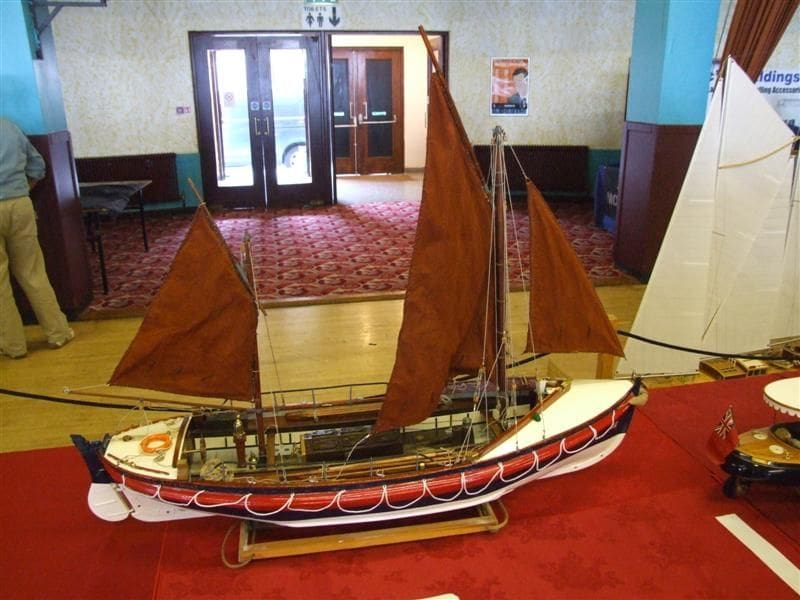
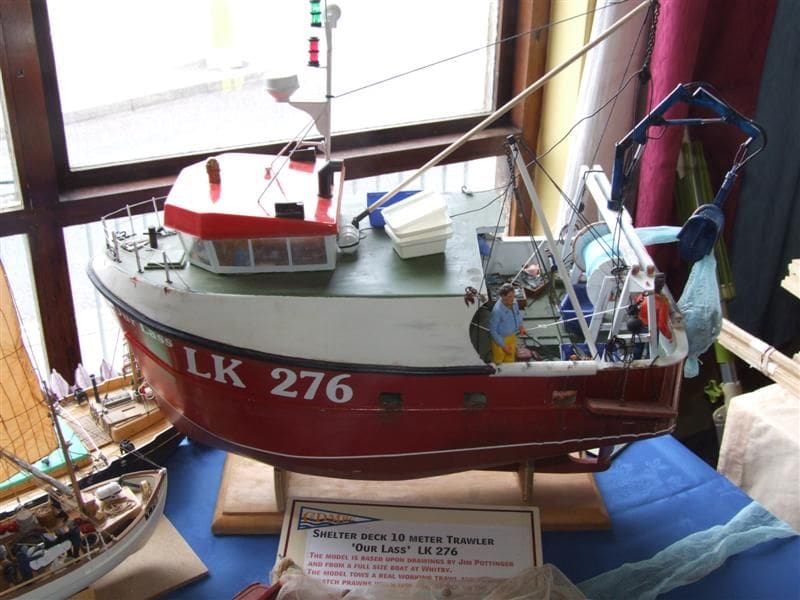
One of the Weymouth and Portland MBC exhibits was this fine model of a Robbe Valdivia, Photo 7. This recently completed model was built by Mike Caple and uses Futaba F14 radio to control the two sail winches, drive motor and rudder and Photo 8 shows some of the detail. The members of the club, Photo 9 had quite a cross section of models on display, from the Valdivia to a landing craft.
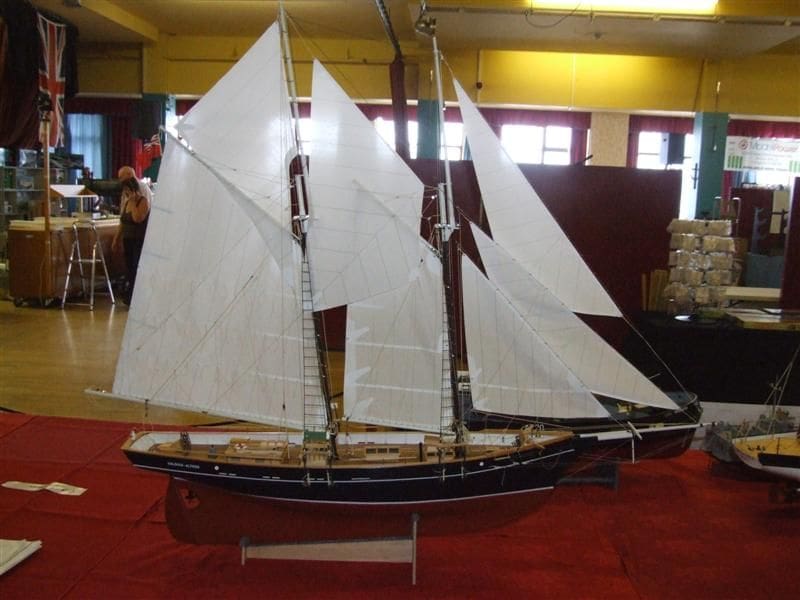
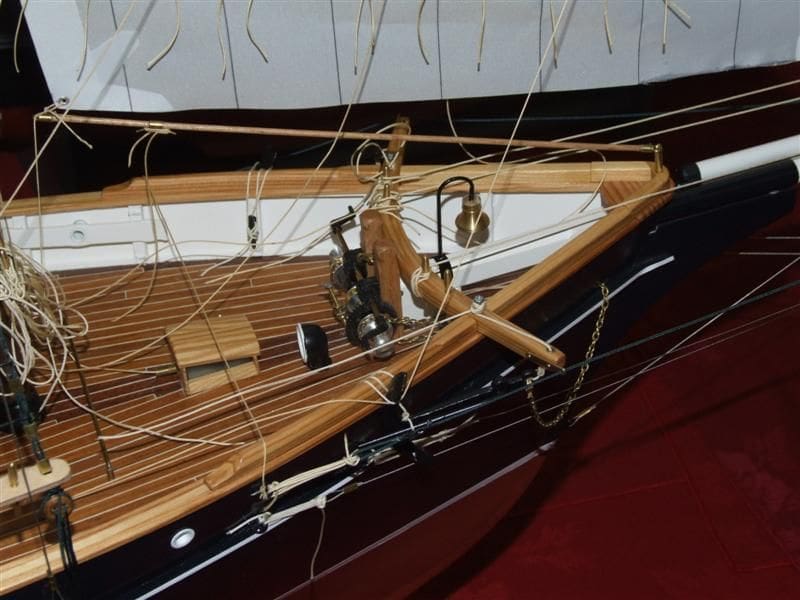
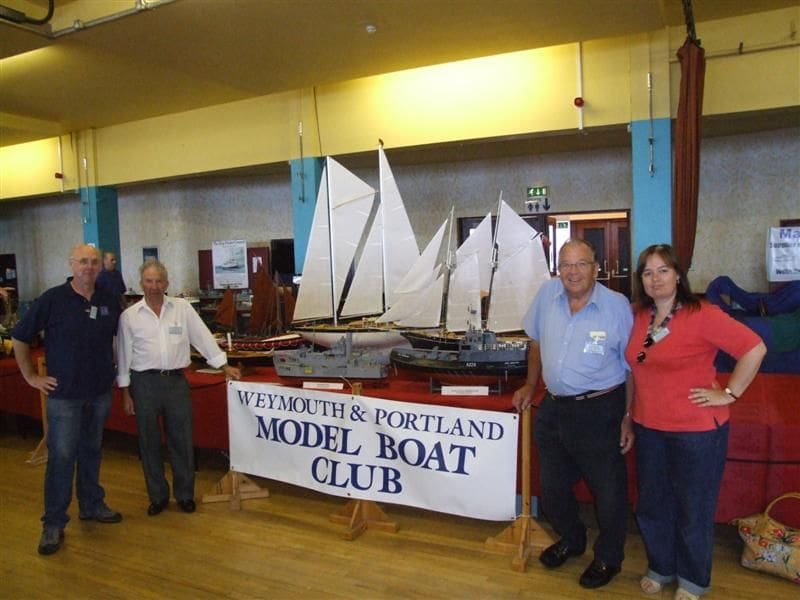
Tony Holtham of the Small Craft Historical Research Group was manning their stand, which this year featured new publications on the Miami Crash Boats as well as information on Private Venture boats, PV70 to PT371, Photo 10. These useful books were co-authored with his brother.
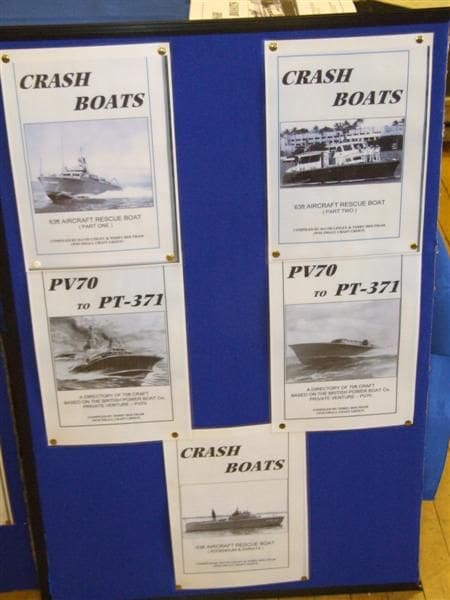
Captain Peter Tambling, the ex-Master of SS Shieldhall, had a display of waterline models of all the vessels he had served on from 1941 to 2004, Photo 11. SS Shieldhall is the last passenger/cargo carrying steamship to fly the British flag. Continuing his theme of modelling puffers, Graham Castle had his latest work in progress on display with his other completed models. Caron Steam lighter No 10 of 1871 was, to quote the information given: An early Puffer built for the trans-shipment of bulk cargoes along the Forth and Clyde Canal, but later converted for outside work, Photo 12. As usual, the model is built to Grahams exacting high standards.
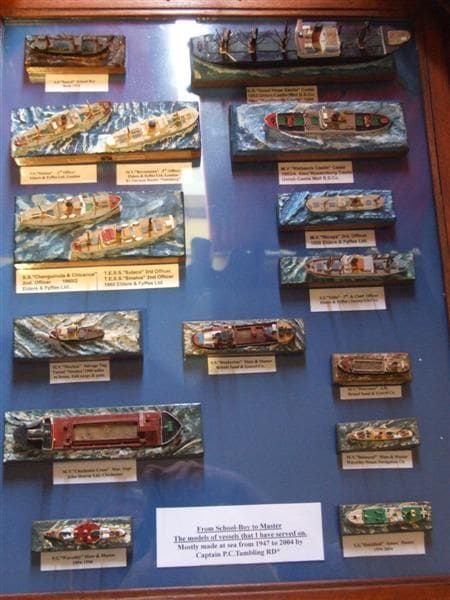
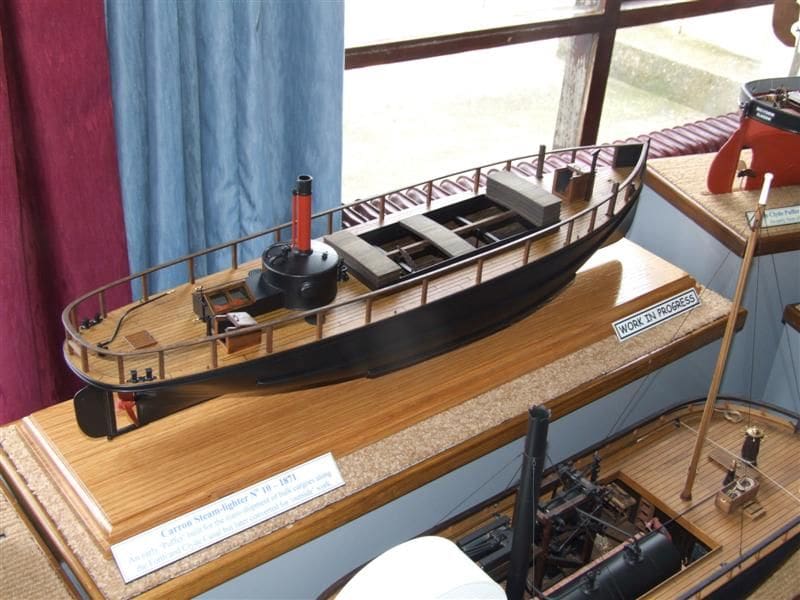
Upstairs in the exhibition, we found an array of toy model boats on display, brought along by Trevor Smith. A couple of models caught the eye: In Photo 13 is a model of a Hobbies/Bowman Steam Launch that can just be seen to the left of Activity. The engine details can be seen in Photo 14, which also shows the conversion of the reciprocating action to rotary and the final drive using a crown wheel and pinion to transfer it through 90º.
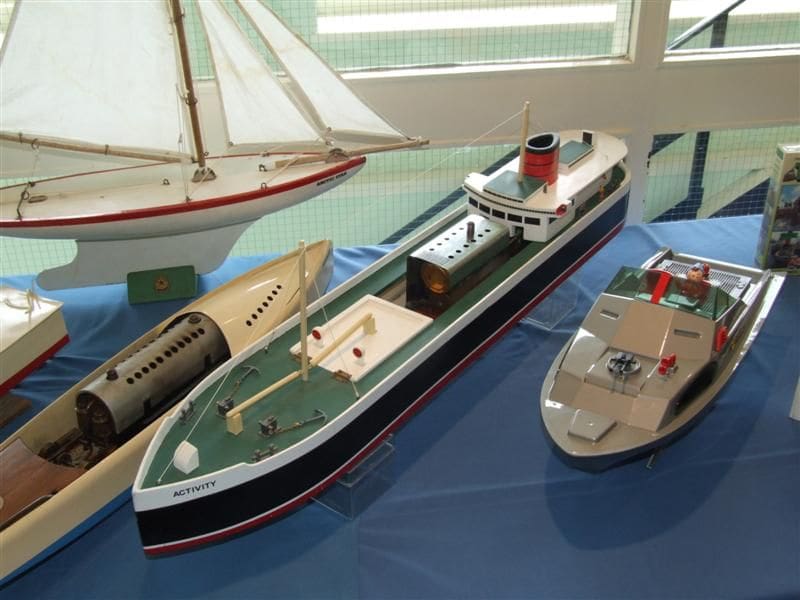
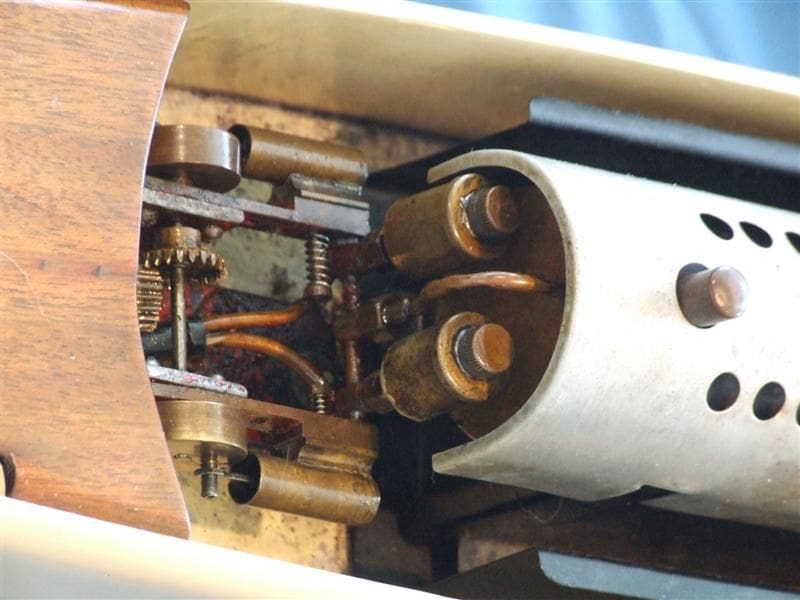
Activity was also steam powered, using a Mamod Meteor steam engine. In recent years Hobbies have upgraded this model kit, producing a wood pack for it or if preferred a GRP hull.
Back on the ground floor this nicely made model of a sailing dinghy belonged to Ted Scholes of Ribble MBC, Photo 15. Whilst on the subject of models with sails, Phil Sadd had his model of Shadow Dancer on his stand, Photo 16. The original hull was built in 1929 and was found in an attic. Too rotten to save, a mould was taken from it and this GRP hulled model was produced. The cabin, deck and rigging are based on a T Harrison Butler design and his wife Carol made the fenders.
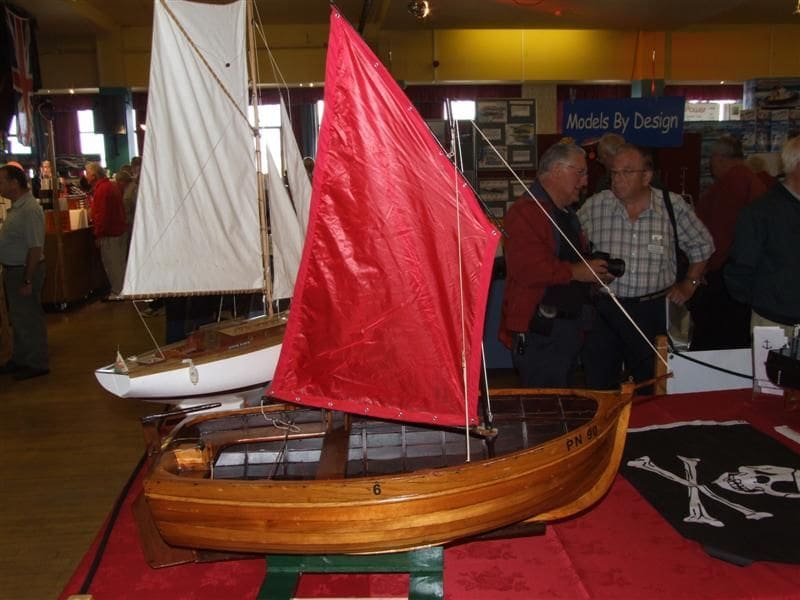
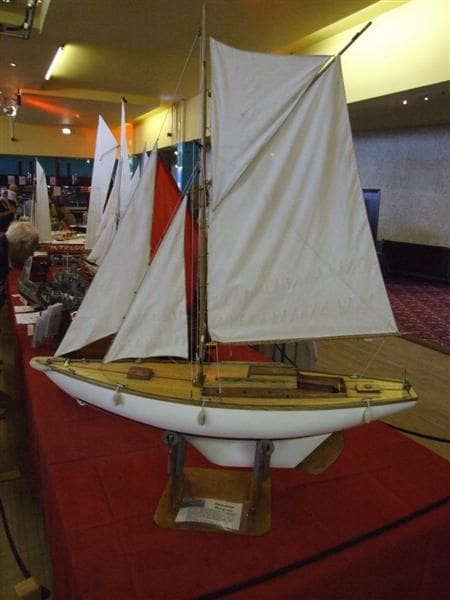
On the forecourt of the pavilion were the portable outdoor pool and a smaller pool for the childrens workshop. Around the main pool, models were displayed on tables whilst awaiting their sailing slots. At this time, Brian Knight had two of his models at the pool, the first of which, Photo 17, was his model of the Oceanic. This is based on the Schuco kit and is now some thirty years old. Incidentally, if anyone has the plan and building instructions for this kit, please let me know as mine are missing and I would be grateful for a set. Brians other model, Photo 18, is of the Model Slipway Envoy tug. He has modified the kit to twin screw propulsion from single screw, specifically for tug towing and renamed it Enigma. Photo 19 shows part of the internal layout of Enigma. For your interest, during construction plastic tubes were fitted to carry the models wiring before the deck was laid. There is a working bilge pump, fire monitor, steam engine sound effect, tug siren and alarm as well as a smoke generator. The electronics are installed on two levels using JJC sound units, ACTion switcher and micro switches on the lower level and the receiver and two electronic speed controllers on the upper level. Brian has also modified the superstructure into a one piece removable assembly. At the side of the pleasure pier, OMRA were running their series of races over the weekend and Photo 20 shows two of their AA Class boats in action.
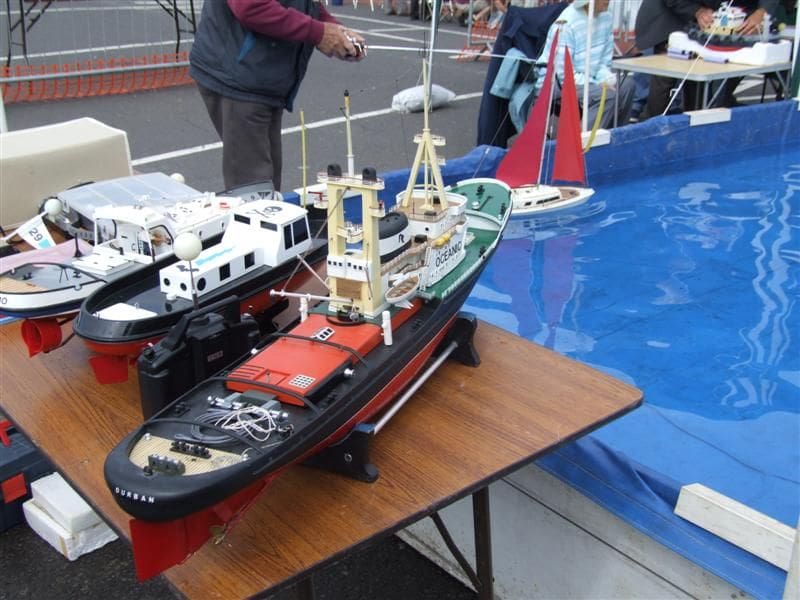
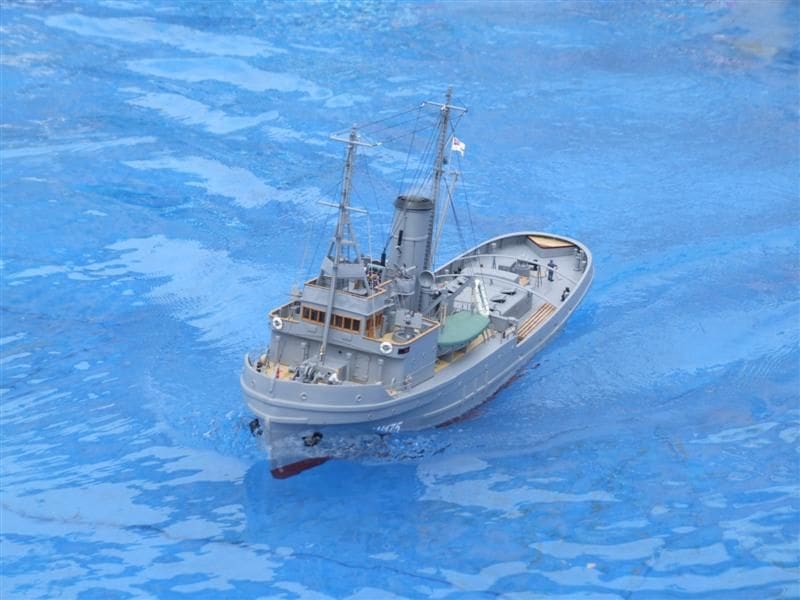
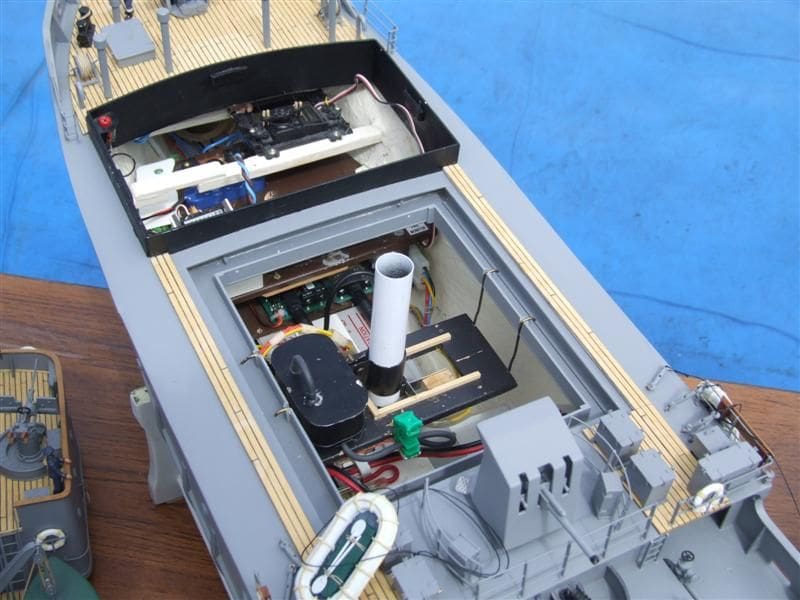
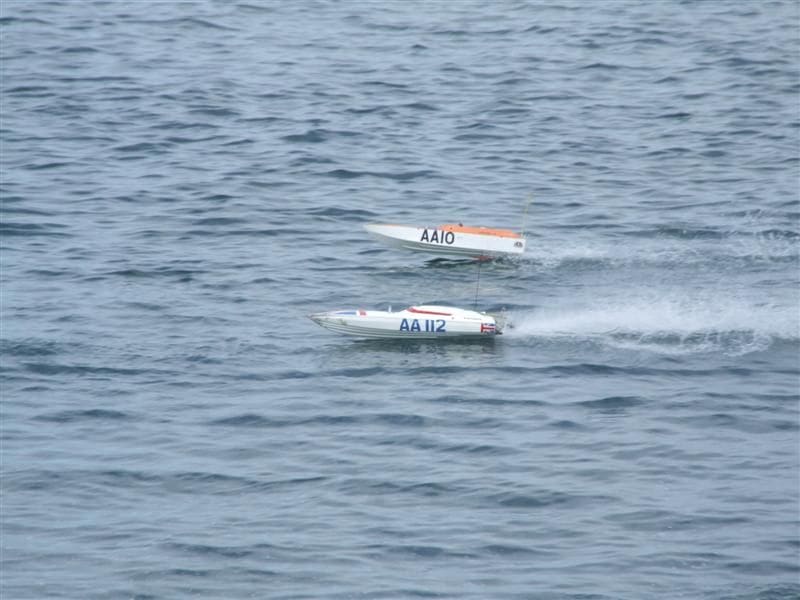
Back at the main exhibition in the Ocean Room we talked to Ken Crossley, who we had last seen at the annual Warwick event (Nov. 7th to 9th in 2008), who was as usual exhibiting his Air Sea Rescue display, Photo 21.
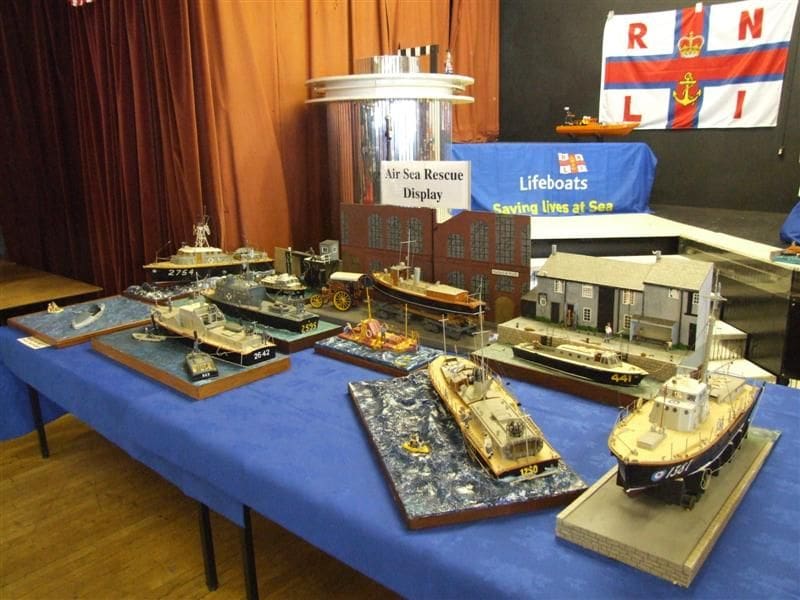
Well leave Weymouth there for this month, but next issue well have a look at a few full size vessels, the dioramas and the paddle toy racing.
Brentwood MY&PBC Scale Open Day
This year, the Scale Section of this club decided to have an Open Day rather than just the usual navigation steering event on their private lake at Thoby Lane, Mountnessing near Brentwood. All the club members and some of the wives pitch in to make this a relaxing day for the members and visitors. This year as well as guests from local clubs we also had some members of the Surface Warship Association and Dave Abbott. The day included free sailing, an optional navigational steering event, best on the stand static award and a best on the water prize. The lake, Photo 22, is permanently buoyed so that members can make full use of the facilities from dawn to dusk, 365 days a year. As I said in the opening sentences, Scale Secretary Dave Petts had organised a low key steering competition for those who wanted to participate, and for those who didnt there were free sailing periods. Photo 23 shows some of the participants in the Steering Competition while Photo 24 shows Daniel Lambert from Wat Tyler MBC docking his Warrior watched by dad Malcolm and judge Andy King.
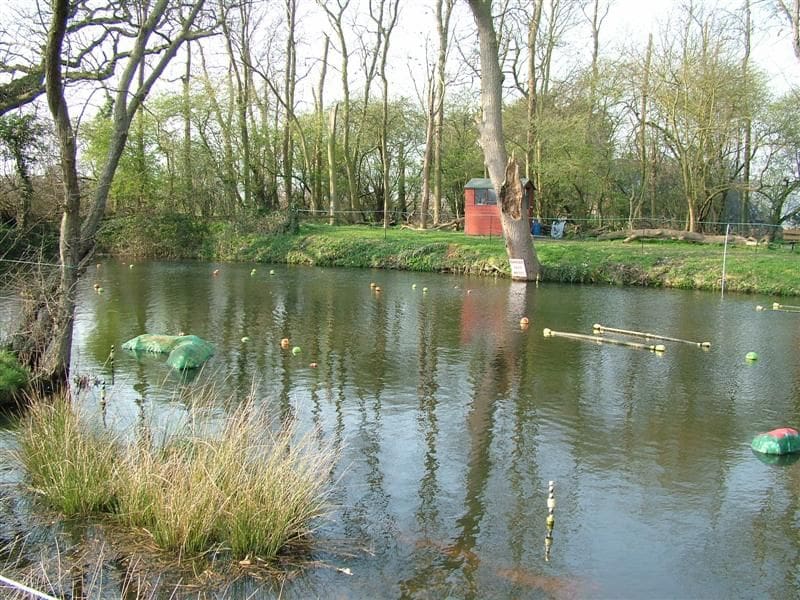
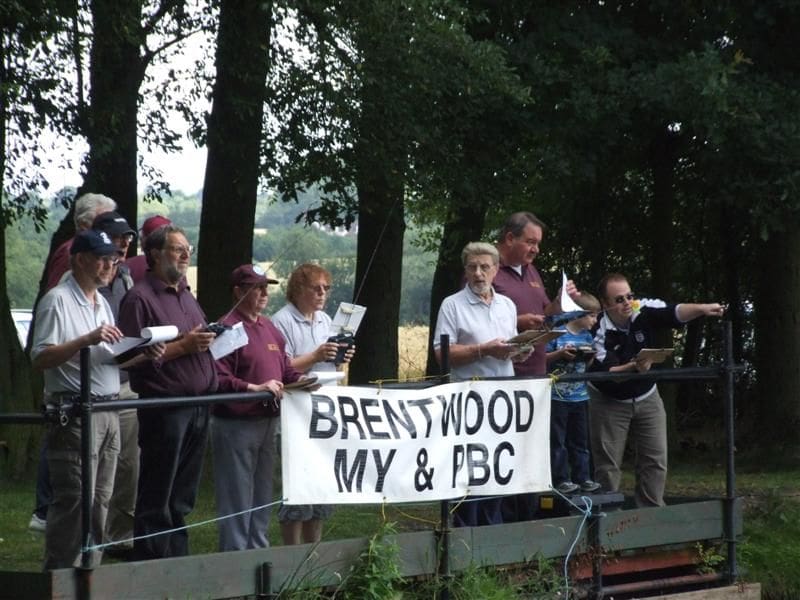
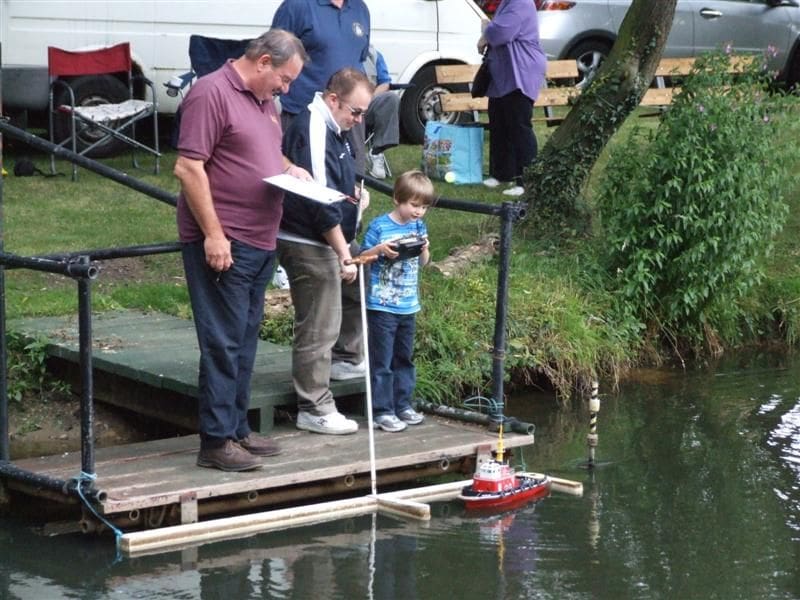
Keith Henley from the Moorhen Club at Harlow was sailing his model of HMS Bulldog, a now decommissioned RN survey vessel. It is based on a Models by Design hull and Photo 25 shows the model returning to the launching area watched by Jack Connelly, judging. Barry Chapman from SWA was sailing his model of Scorpion, a Riga Class frigate, Photo 26. Barry took first prize in the static competition for his fine model, which also performs well on the water. Photo 27 shows Barry (left) receiving his prize from Dave Petts. A vote of thanks must also go to Mike Beynon and Carol who kept the tea, coffee, bacon and sausage rolls going all day. Tea and coffee were free to everyone all day and the general consensus from the visitors were that they liked the days format. It was certainly the best turnout in recent years.
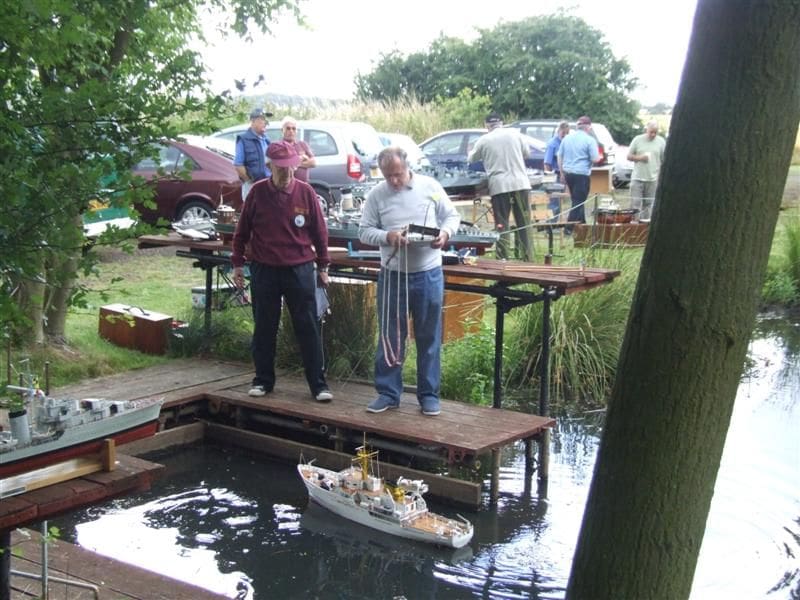
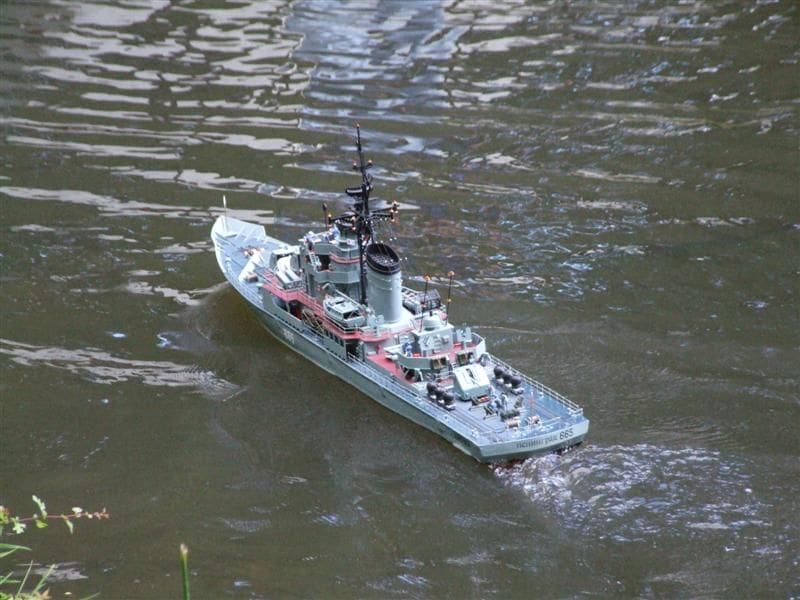
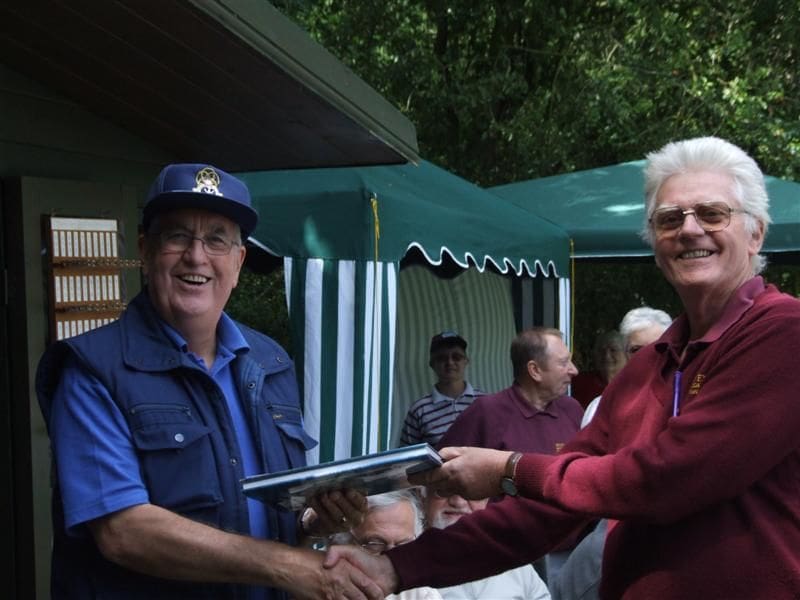
For further details of the club please contact the author or the Editor.
Al Khubar kit review revisited
This month we are looking at of one of the very popular model tug kits from the Model Slipway originally reviewed by Allan Miller in January 2000 Model Boats. It could be built in one of three versions, Al Khubar 1 with a black hull, Al Khubar 2 with a red hull and Al Khubar 3 with a blue hull. In the published full review, Alan chose to paint his in blue as in Photo 28. The model is to a scale of 1:32 giving a hull size of 785mm (31ins) long by 240mm (9.5ins) beam. Displacement is approx. 10kg (22lb). The kit contains a detailed GRP hull, running gear (propshafts, rudders, Kort nozzles and propellers), CNC routed and printed styrene for the decks and superstructure, as well as cast alloy fittings, the usual rod and wire, instructions with step-by-step assembly drawings and plan, Photos 29 and 30. The builder will have to provide motors, paints, adhesives and r/c equipment. As this is a twin screw model, the builder has a choice of running both motors from one speed controller, or using two with one for each motor giving independent control.
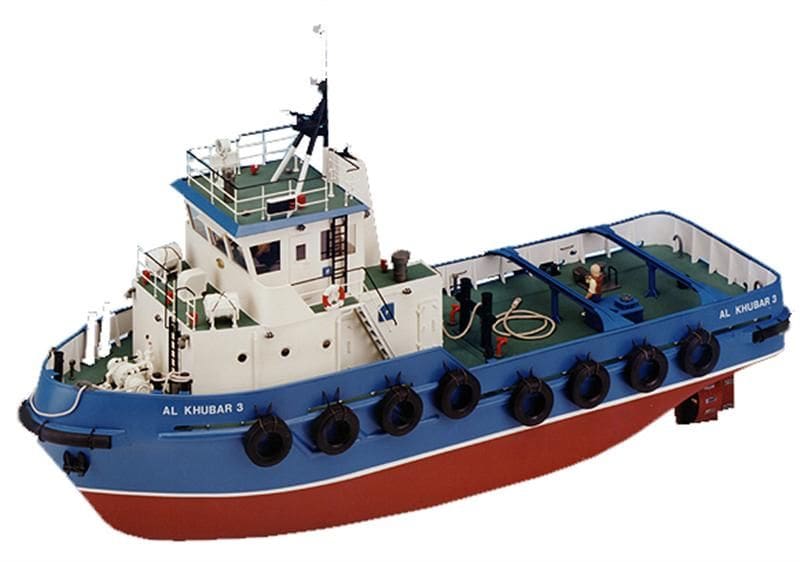
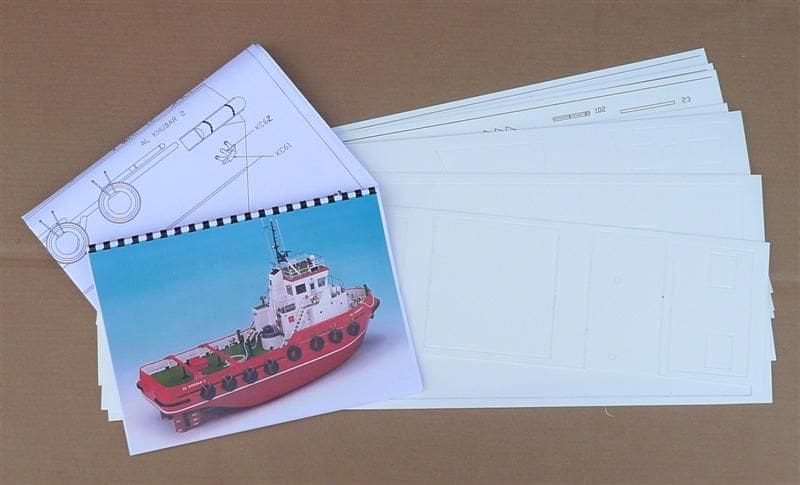
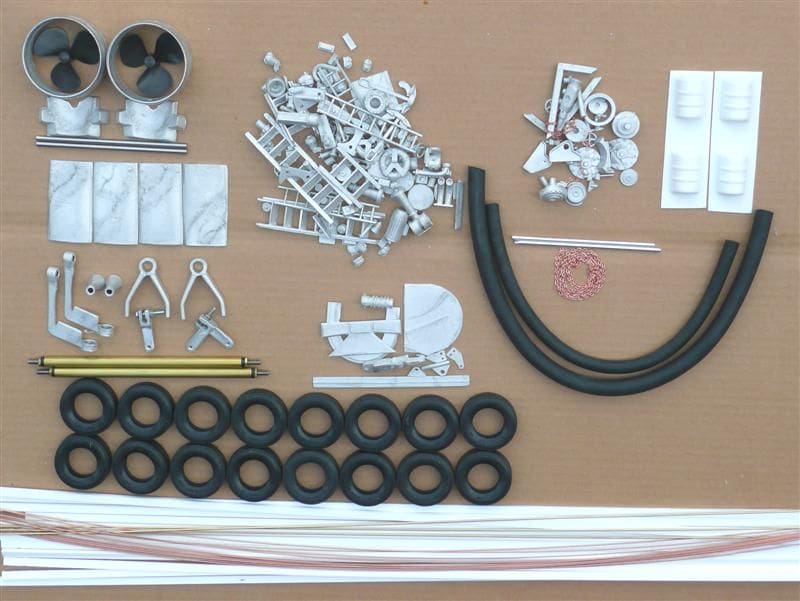
Initial hull construction is conventional with the rudders and propshafts being installed into the hull with correct alignment using the jigs provided, followed by the installation of the drive motors.
After the freeing ports are cut out, the inside of the bulwarks are lined with thin styrene and the deck supports fitted, followed by the deck beams. The decks are then prepared and trimmed to shape. After fitting the stern deck the forward deck is finally trimmed for an exact fit against it, then glued in place and the superstructure coamings added.
Allan built the superstructure in three stages the lower part, the wheelhouse and the roof. He found the build straightforward, all parts fitting together accurately. After completing all the basic construction the model was painted following the guidelines provided. The remaining fittings were then assembled, painted and added with Photo 31 showing in particular the highly detailed wheelhouse interior. The whole model was sprayed overall with a couple of thin coats of satin varnish before the glazing for the wheelhouse windows was fitted and then the roof and mast were finally glued in place. Allan built the handrails in-situ earlier in the model build as this was easier. Foam rubber fenders and tyres added to the hull finished the model construction before finally installing the radio control equipment. Allan chose to use two ACTion 20 Amp electronic speed controllers with a four channel radio system. He concluded: Al Khubar looks and operates beautifully on the water and I found it quite an easy model to construct. Everything fitted correctly and along with the ease of construction it was very enjoyable to build.
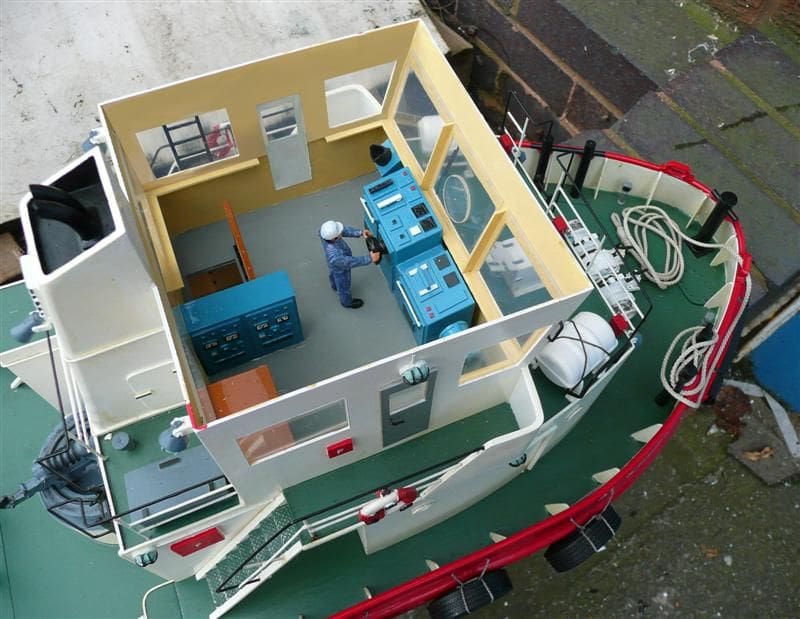
This is a nice sized and practical model tug, not too demanding and ideal for free sailing, navigation courses and with a suitably strengthened towing point it can be used for tug towing. Al Khubar is listed on the Model Slipway website: www.modelslipway.com with a retail price of £194 inc. VAT, plus £10 carriage. This is the same price as in 2000 when the model was reviewed if only inflation was like that for everything else! All the pictures are courtesy of Model Slipway. Copies of the original review should be available from MyHobbyStore Customer Services, address on page four of this magazine.
Thats all for this month, happy modelling! If you want to get in touch please do so either via the editor, or email: [email protected].




